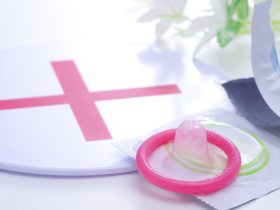The Food and Drug Administration (FDA) of the United States has given its approval for the oral contraceptive pill Opill to be sold without a prescription. As a result, it will be the first birth control pill in the United States that does not require a doctor’s prescription to be purchased.
There will be no age limitations associated with the sale of Opill, a “mini-pill” that contains solely progestin. According to a statement released by the pharmaceutical company Perrigo, customers should be able to purchase it offline and online sometime in the first few months of 2019.
“This is huge,” says Dana Singiser, who is also a board member of Planned Parenthood Metro Washington and a co-founder of the Contraceptive Access Initiative (CAI). In order to increase access to a pill that tens of millions, if not hundreds of millions, of women worldwide have used safely and effectively for the past 50 years, the FDA followed the evidence and the science.
Long safety record for new OTC birth control pill
The FDA stated that allowing people to purchase Opill without first consulting a doctor is likely to increase access to contraception generally and decrease unintended pregnancies. According to the Food and Drug Administration (FDA), about half of the 6.1 million pregnancies that occur in the United States each year are unplanned. This scenario decreases the likelihood that women will receive prenatal care and raises the likelihood that women will have premature deliveries and other difficulties.
According to a statement made by the FDA’s Center for Drug Evaluation and Research director, Patrizia Cavazzoni, MD, oral contraceptives taken daily are safe when used properly and are projected to be more successful at preventing unwanted pregnancies than current nonprescription contraceptive methods.
According to the FDA, Opill has been accessible with a physician’s prescription since 1973. The majority of customers understand how to use this medication correctly without consulting a doctor or obtaining a prescription, according to studies that the Food and Drug Administration (FDA) looked at before approving over-the-counter sales.
Take Opill: What are the side effects?
According to the recommendations of the FDA, Opill should be taken at the same time each day in order to be effective. People who have a history of breast cancer or who are already taking another form of hormonal contraception, such as birth control pills, contraceptive patches, vaginal rings, implants, injections, or intrauterine devices (IUDs), should not use this method of birth control. Those who have a history of breast cancer should also avoid using this method.
According to the FDA, some of the most common adverse reactions to Opill include abnormal bleeding, headaches, dizziness, nausea, increased appetite, and abdominal pain, cramps, or bloating. Other side effects may also occur. If a person experiences recurrent vaginal bleeding after having sexual activity, bleeding that lasts for an unusually extended amount of time, or if their periods suddenly stop, they should consult a medical professional.
Where can I buy Opill, and how much does it cost?
Perrigo has not yet disclosed Opill’s U.S. price. Reproductive endocrinologist and fertility specialist Asima Ahmad, MD, MPH, co-founder and chief medical officer of Carrot Fertility and a practicing physician in Chicago, thinks this will affect which women have easy access to this way of stopping pregnancy.
According to Sarah Prager, MD, a fellow of the American College of Obstetricians and Gynecologists (ACOG) and a professor of obstetrics, gynecology, and complex family planning at the University of Washington in Seattle, the placement of Opill within stores will also affect its accessibility.
















Find Us on Socials